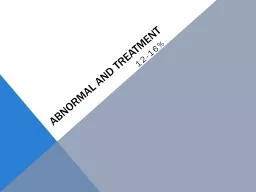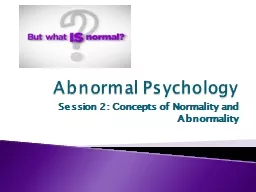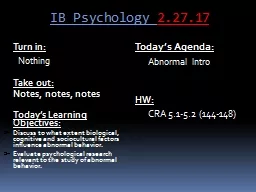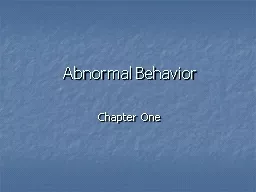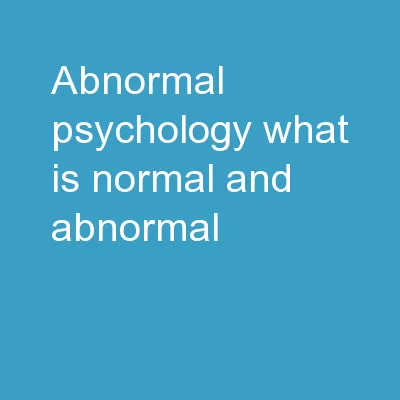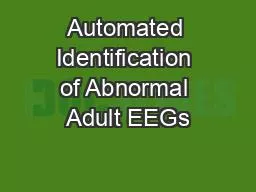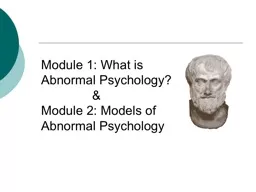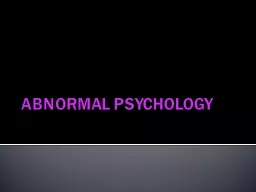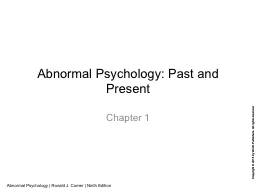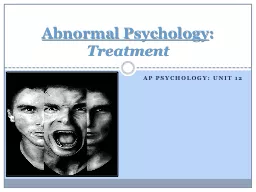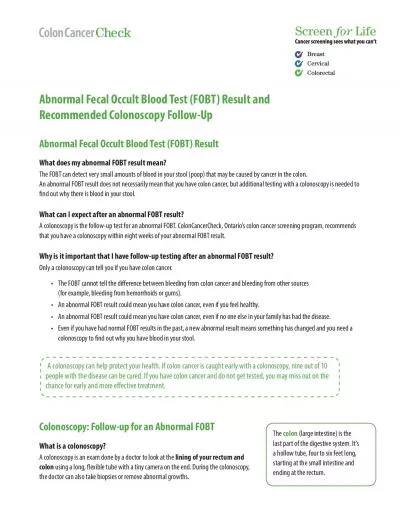PPT-Abnormal and treatment 12-16%
Author : Kingslayer | Published Date : 2022-08-02
How has mental health issues effected you Absolutely no names Please put on the sticky note how mental health issues have effected you either personally or familyfriends
Presentation Embed Code
Download Presentation
Download Presentation The PPT/PDF document "Abnormal and treatment 12-16%" is the property of its rightful owner. Permission is granted to download and print the materials on this website for personal, non-commercial use only, and to display it on your personal computer provided you do not modify the materials and that you retain all copyright notices contained in the materials. By downloading content from our website, you accept the terms of this agreement.
Abnormal and treatment 12-16%: Transcript
Download Rules Of Document
"Abnormal and treatment 12-16%"The content belongs to its owner. You may download and print it for personal use, without modification, and keep all copyright notices. By downloading, you agree to these terms.
Related Documents

